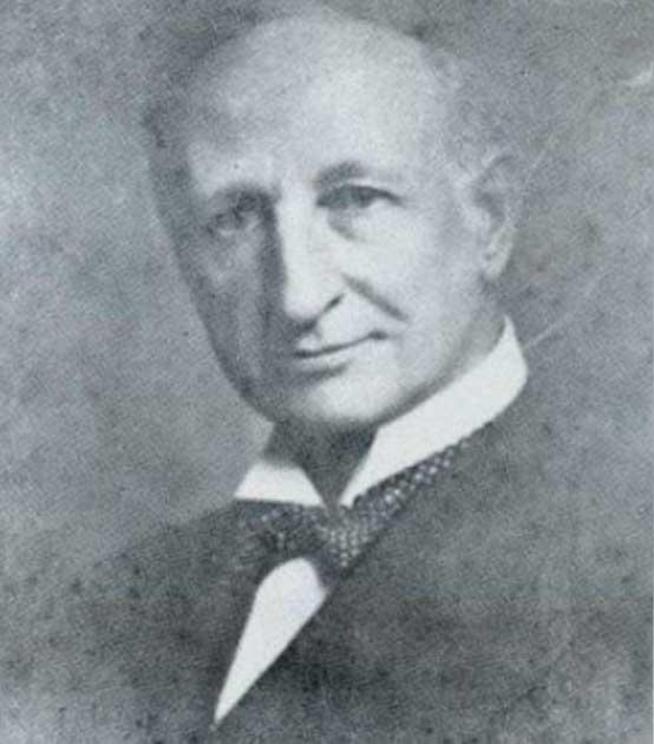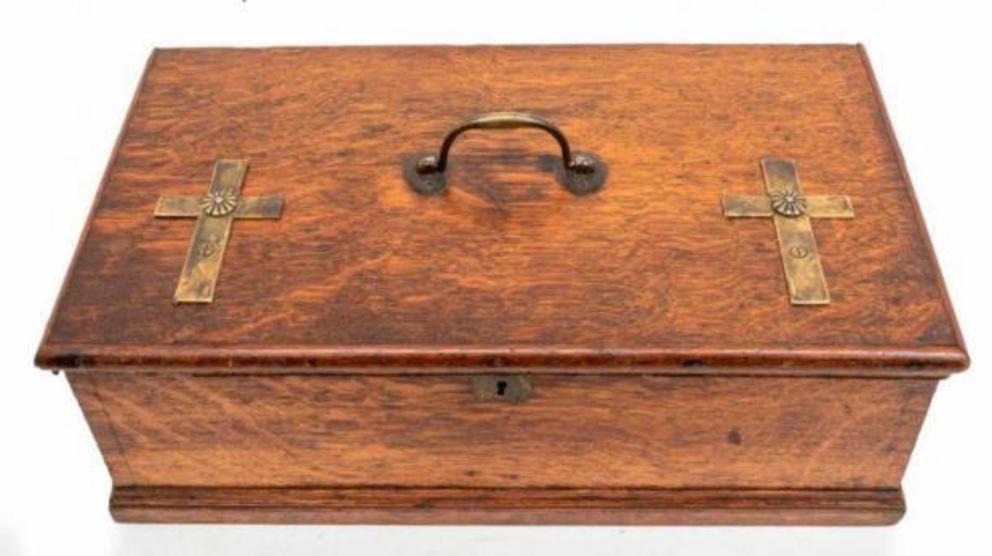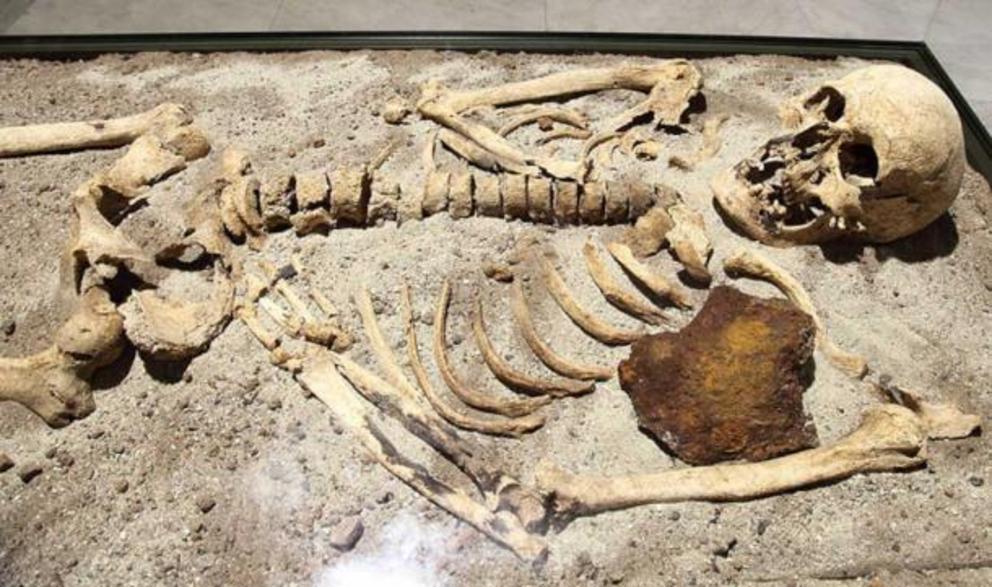Vampire slaying kit sells during high-stakes bidding war
Top image: The vampire slaying kit which was sold at auction.
A vampire slaying kit has been sold for five times more than expected at an auction in Derbyshire, England. The sale of this bizarre box of artifacts, once believed to help guard against vampires, proves that the mythology and popularity of vampire culture is still going strong.
The Vampire Slaying Kit Of A British Aristocrat
The vampire slaying kit in question seemingly dates back to the late 19th century. Within a lockable box, the vampire slaying kit contains a selection of implements popularly believed to fend off vampires, such as holy water , a stake, a Bible, crucifixes, a pair of pistols, a wooden mallet, rosary beads, and even brass candlesticks.
This particular vampire slaying kit belonged to a British aristocrat, Lord Hailey, remembered as a British peer and a former governor and administrator in British India, who also worked in Africa. “Whether through fear or fascination, it’s interesting to know a member of the highest aristocratic social order, a man with a place in the House of Lords, acquired this item,” stated Charles Hanson, the owner of Hansons Auctioneers who handled the sale. “It reminds us that the vampire myth affects people from all walks of life.”
 The vampire slaying kit originally belonged to a British aristocrat, Lord Hailey.
The vampire slaying kit originally belonged to a British aristocrat, Lord Hailey.
Bidding for the 19th Century Vampire Slaying Kit
The auction took place in Derbyshire on 30 June 2022. “Bids came in from all over the world including France, America and Canada,” explained a press release from Hansons Auctioneers . “Objects like this fascinate collectors and this one had particularly interesting provenance.”
The vampire slaying kit was originally estimated to sell for between £2,000 and £3,000 ($2,400 to $3,600), but the actual auction ended up as a cutthroat bidding war. In the end the vampire kit was sold for a stunning £13,000 ($15,700). “I was stunned and delighted by the result,” said the anonymous seller. “It’s a fascinating item, a conversation piece.
 The vampire slaying kit was kept in a lockable box.
The vampire slaying kit was kept in a lockable box.
Vampire Myths and Vampire Slaying Kits
While it may sound bizarre, the existence of vampire slaying kits is actually not all that outlandish and they were particularly popular in the 18th and 19th century. The Ripley collection , created by Robert Ripley himself, actually contains several vampire slaying kits, which include all the various objects which mythology claims were needed to kill a vampire. There is even a vampire-killing kit at the Royal Armories Museum in Leeds, England, which includes a stake, mallet, crucifix, rosary, a gun, a mold for casting silver bullets, and three bottles, one with garlic, another with holy water, and a bottle of sacred earth.
Nevertheless, the belief in vampires, and the varied ways of killing them, may have started far earlier. Mythology related to vampire-like creatures was particularly popular in the eastern European Slavic countries. Modern ideas about vampires started appearing in the 18th and 19th centuries, at a time when they began to be popularized in literature, in poems, such as Heinrich August Ossenfelder’s Der Vampyr (1748) and stories such as John Polidori’s The Vampyre (1819), Sheridan Le Fanu’s Carmilla (1871-72) and Bram Stoker’s Dracula (1897).
“Belief in vampires, an undead creature said to need human blood to survive, goes back hundreds of years and persists in some parts of the world today,” explained Charles Hanson. “The task of killing a vampire was extremely serious and historical accounts suggested the need for particular methods and tools. Items of religious significance, such as crucifixes and Bibles, were said to repel these monsters, hence their presence in the kit.”
 An 800-year-old skeleton found in Bulgaria stabbed through the chest with iron rod.
An 800-year-old skeleton found in Bulgaria stabbed through the chest with iron rod.
Anti-Vampire Rituals in Bulgaria
Back in 2013, Bulgarian archaeologist Nikolay Ovcharov explained in Sofia News Agency that anti-vampire rituals, which have been practiced since at least the 13th century, only stopped being practiced around 25 years ago.
According to pagan beliefs, people who were considered bad during their lifetimes might turn into vampires after death unless stabbed in the chest with an iron or wooden rod before being buried. People believed the rod would also pin them down in their graves to prevent them from leaving at midnight and terrorizing the living. The legends formed an important part of Bulgaria’s folklore, as well as other countries throughout Europe.
“We are not medieval people to believe in vampires, but in the past people believed that they existed and conducted ceremonies to prevent the dead from turning into these devilish creatures,” said Ocharov.
The archaeologist, nicknamed Bulgaria’s Indiana Jones (of course), added that only 25 to 30 years ago in some of the Bulgarian villages there was a special person responsible for sticking dead bodies with stakes – a ritual aiming to prevent the body from turning into a vampire.
Throughout Bulgaria, the remains of over 100 vampire-treated people, all of them men, and all of them prominent citizens, have been found. One of these “ vampire” skeletons was discovered in 2012 in Bulgaria’s historical coastal town of Sozopol, and, more recently, a skeleton of a "vampire" was discovered on Bulgaria's Perperikon , a 7,000-year-old sacred site deep in the Rhodope Mountains.
The pagan rite was also practiced in neighboring Serbia and other Balkan countries, and several months ago so-called “vampire” burial sites were discovered in Poland . Most people acknowledge that the rituals are based on superstition and folklore, however, there remain a small minority of people who still believe that actual blood-sucking vampires do exist.

